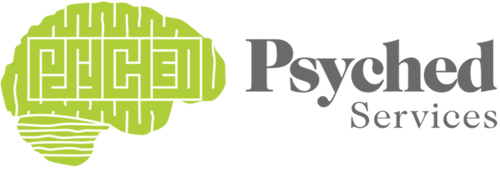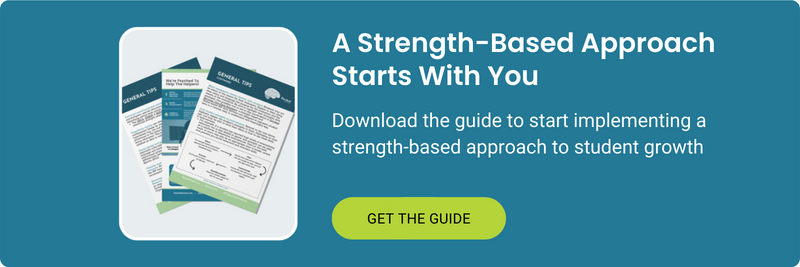California Dyslexia Guidelines: Assessment and Intervention

In the first article of this series, we outlined research-based interventions that schools can use to help struggling readers while also following the California Dyslexia Guidelines. We left you with the CDE’s important message that, “when a student has demonstrated limited or slower-than-expected progress, additional assessment is needed.” So, what exactly does that mean? In most cases, additional assessment means referring the student for a special education evaluation. In turn, a special education evaluation means assessing for traits of a specific learning disability. The CDE guidelines haven’t changed this process –– they’ve only expanded it to include consideration for traits of dyslexia. Since as many as 80 to 90 percent of children who struggle with a learning disorder have dyslexia, the guidelines are a crucial step toward correcting past under identification. As part of this process, it is important for schools to use evidence-based screeners to identify traits of the disorder prior to referring for special education (see our first article, California Dyslexia Guidelines: What Next?).
In this article, we continue to discuss key elements of the CDE guidelines while offering next steps for students who have not responded favorably to Tier 1 and 2 intervention.
When Progress is Stalled, Additional Action Is Needed
What does it mean if a student isn’t making the expected reading progress with Tier 2 support? In our experience, most educators know that an underlying learning disorder (aka learning disability to us special education folk) could be to blame. In such cases, schools usually know what Child Find says to do (i.e. consider a special education evaluation) and are comfortable doing it.
The thing is, dyslexia is just a fancy name for a specific type of LD, so the process really isn’t that different.
Here’s a quick refresher of what to do when student progress is stalled at Tier 2:
First and foremost, teams should meet to review the student’s progress, discuss options, and make a decision about how to proceed. As long as the team is using data to guide their decision-making process, there are a few acceptable options. However, be sure to keep the student’s parents or guardians informed by documenting the process, explaining their rights, and obtaining their signed agreement.
Option 1 – Continue with current plan
Sometimes students benefit from interventions, but at a slower pace than expected. When progress is steady, teams may decide that intervention should continue, and they don’t necessarily need assessment to do this. (Quick tip: the purpose of special education assessment is to determine if a student meets IDEA criteria for a disability category and to make programming recommendations). However, if the team decides that no additional assessment is needed, it’s imperative that the student’s parents or guardians understand the reason for this decision and that they understand their options.
Option 2 – Consider 504
Students with any learning disorder, including dyslexia, may be eligible for 504 support even if they do not meet the special education criteria for a specific learning disability (see our previous post, 504 or IEP?). A student with dyslexia doesn’t automatically require special education services, but they are entitled to additional support per Section 504 of the federal Rehabilitation Act of 1973. The California Dyslexia Guidelines provide great recommendations for general education assessment starting on page 49.
Per the guidelines, examples of 504 supports for students with dyslexia include:
- Individual or small-group instruction
- A multi sensory approach to learning
- Additional time to complete assignments
- Assistive technology for reading and writing
- School staff reading books or instructions to the student
- Use of highlighters to organize written information
- Use of audiobooks to complete reading assignments
- Recordings of lectures
Option 3 – Refer for special education evaluation
While many students with dyslexia respond well to 504 support, there are times when a special education evaluation is appropriate. These include:
- When a student’s progress is so delayed that they consistently perform below grade-level, despite added supports and services;
- When a student is successful with grade-level curriculum, but only because of the level of support they receive (i.e. it is likely they would regress if support were removed) AND the support is more intensive than what is available through 504;
- When a parent provides documentation that a child has been diagnosed with dyslexia (often in the form of a physician note) or when a parent requests assessment. In these situations, Child Find is automatically put into play and the school district, SELPA, or county office is responsible for helping the family put the verbal request into writing (check out this sample Memorialization Letter). Upon receiving a written request for evaluation, schools must respond within 15 days and follow a specific protocol outlined by the SELPA.
Special Education Assessment of Dyslexia
Just like other learning disorders, dyslexia falls under the special education (IDEA) category of specific learning disability. In most cases, a school psychologist and education specialist will work together to complete the assessment.
In addition to the standard testing procedures for assessment of LD, a comprehensive assessment of dyslexia should include the following areas of cognitive and academic functioning:
-
Phonological processing/phonetic coding/phonemic awareness
-
Rapid automatic naming
-
Orthographic skills
-
Auditory working memory/memory span
-
Reading fluency
-
Verbal fluency
-
Verbal/auditory comprehension/association
-
Reading foundational skills (Including sound decoding and symbol awareness)
DON’T FORGET: The results of formal assessment should always be interpreted in the context of a student’s primary language, oral language proficiency, developmental and medical history, and family history. The CDE guidelines offer great input about what cultural, linguistic, and socioeconomic factors to consider when assessing for dyslexia.
Special Education Services for Dyslexia
Once a student has been assessed and identified with dyslexia, an Individual Education Plan (IEP) may be implemented. In addition to other accommodations, teams should consider adding (or continuing) assistive technology, such as:
- Learning Ally Audio Books
- Bookshare
- Speech-to-Text Dictation, such as Dragon Naturally Speaking
- Note taking supports, such as LiveScribe Pen
Students with an IEP may also require Specialized Academic Instruction (SAI) that is intended to provide a remedial, evidence-based approach to teaching academic skills. For students with dyslexia, this includes learning to read in a specialized multi-sensory way. Some schools provide these as pull-out services in a resource room, while others provide inclusion support in the student’s general education classroom.
However, it is just as imperative to understand the strengths of research-based curricula for subtypes of dyslexia. For instance, a child with poor phonemic awareness may do well with a phonics-based program and a child with orthography weaknesses may benefit from structured word inquiry and direct instruction on morphology and etymology in addition to a phonics-based program. These are some Tier 3 (i.e. special education) interventions to consider:
Does your team need help addressing the needs of students with dyslexia? The professionals at Psyched Services are here for you! We offer training, assessment, and intervention. Contact us to schedule your free consultation today!





